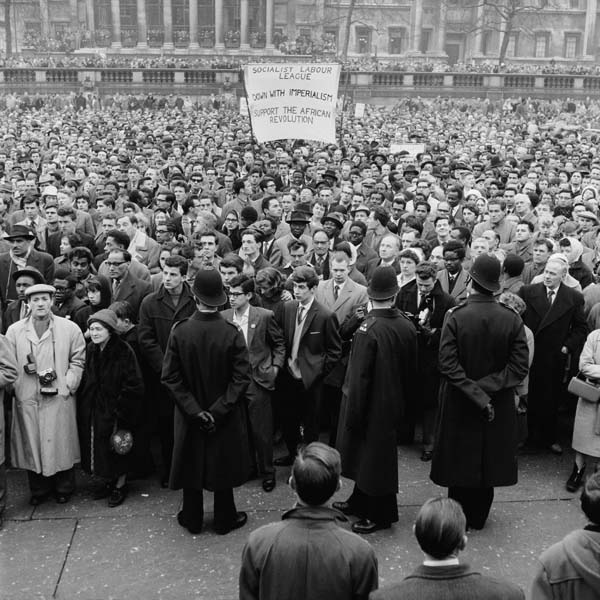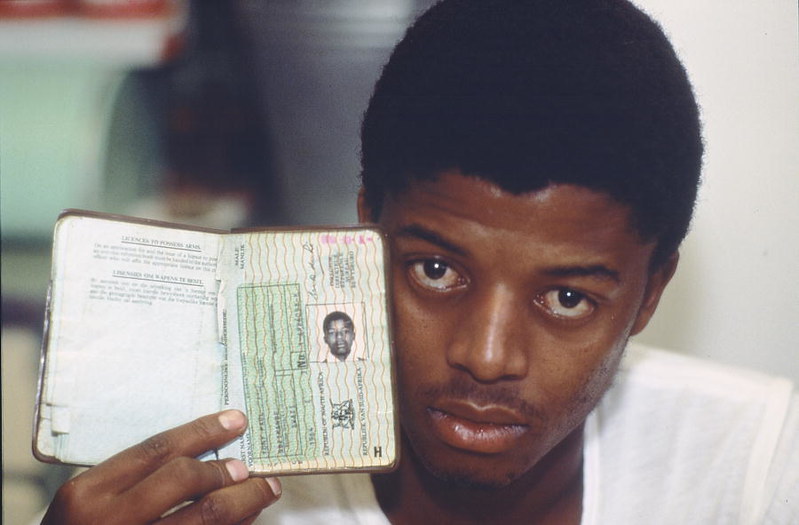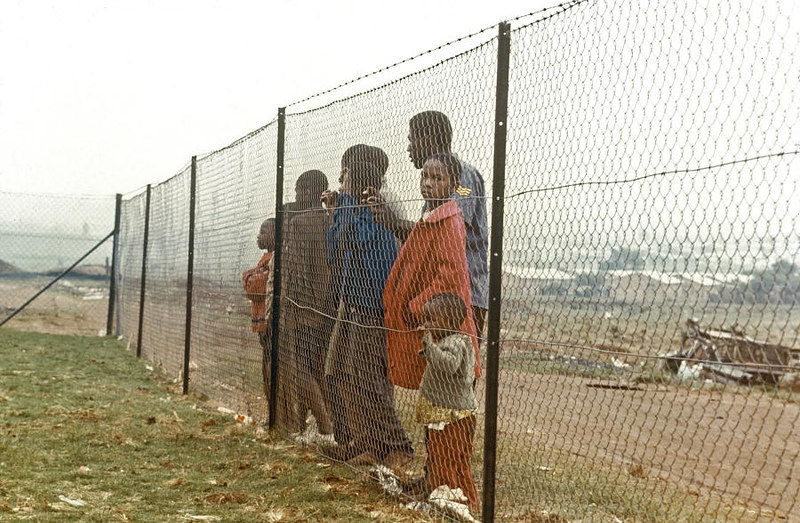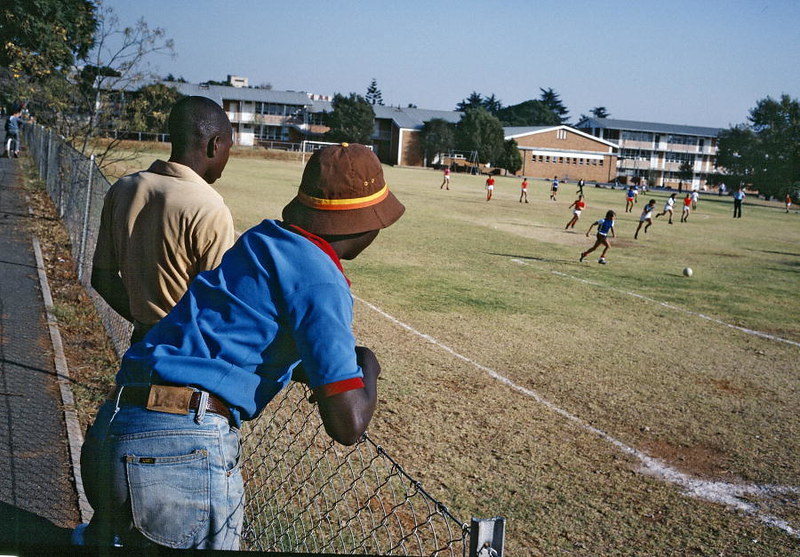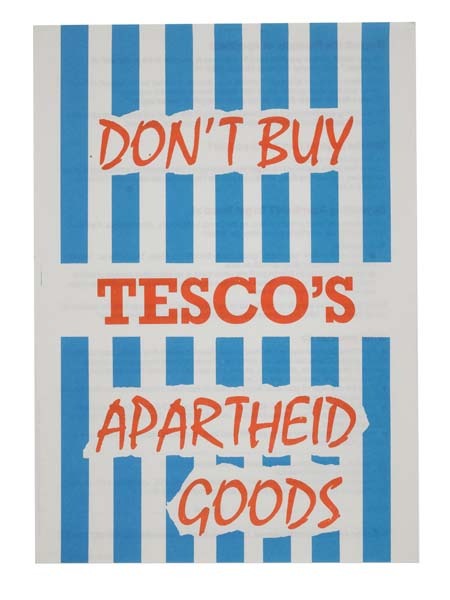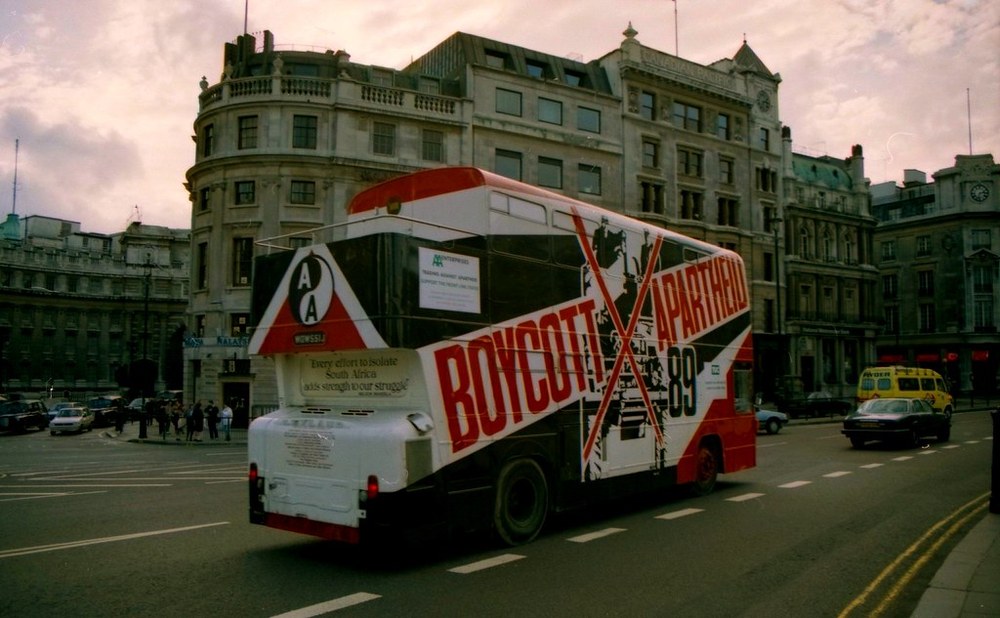The Anti-Apartheid Campaign
The transnational anti-apartheid movement demonstrated how people can influence global political affairs by pressuring their government. To this day, the anti-apartheid movement is studied for its success, and also for the establishment of human rights promotion and advancement (Klotz, 2002, p.69). When apartheid was implemented, people from across the world realised their government was not intervening, so they decided to act. They did, and they succeeded.
What were the Unites States, the USSR, and China doing?
An important reason behind people joining the anti-apartheid movement was the inaction of their government. Protests pushed politicians from many countries, such as the United States, Ireland, Sweden, and Great Britain, to pass sanctions against South Africa. Before the movement gained momentum, governments outside of Africa were indifferent to the situtation. The United States, the USSR and China are instances of countries that were not doing enough to end the apartheid regime.
The United States did not implement policies against the apartheid regime in South Africa until 1986 when Congress voted to adopt sanctions against the country. The American government viewed the situation in South Africa through the Cold War lens. Indeed, it ignored the apartheid regime because the South African government was fervently anti-communist (Michel, 2020, p.297); it had banned the existence and presence of communist parties through law in the early 1950s. Additionally, by accepting the rule of the apartheid government, the United States was securing an ally that provided resources, such as uranium, and that was located in a strategic region. In brief, as the United States was dismantling its racist laws and behaviours in the 1950s and the 1960s, it was accepting the edification of a new racist regime. Only in the 1980s when the transnational anti-apartheid movement was at its peak and when the Cold War had simmered down did the United States change its policies towards South Africa. Even then, Congress was the one who initiated the shift since the Reagan administration did not want to antagonise its ally.
During the Cold War, the Soviet Union was supporting various political groups in Africa. The USSR was financially and militarily aiding groups to expand its influence on the continent. It wanted communist regimes to gain control of African states. Because South Africa was the most economically developed country in southern Africa, the USSR believed that class consciousness could occur at any moment (Onslow, 2009, p.24). As a result, it is estimated that the USSR trained above 2,000 ANC members in Soviet military institutions between 1963 and 1991 (Shubin, 2007, p.255). ANC activists were invited to train in the USSR or in a Soviet facility in Africa. The military training was meant to help the ANC start a revolution and take control of South Africa, as it was the group’s goal. However, they abandoned the use of violence when one of its prime members, Nelson Mandela, practiced non-violence and it showcased results. Additionally, Gorbachev’s policy in Africa was no longer for the Soviet Union to encourage change through violent means, but instead to foster diplomatic discussions to solve the problem (Onslow, 2009, p.27). The USSR’s military aid to ANC members was considerable, but the USSR did not directly confront the apartheid government until the 1980s, when most countries were doing so.
China was separated in two at the time. Additionally, in the 1960s, the USSR and China had a fallout which resulted in a divergence of goals. These two events greatly influenced the China’s intervention in South Africa. In 1960, it declared having cut commercial ties with South Africa to pressure the regime to abolish apartheid. Although it had made this declaration, it kept trading with resource-rich South Africa (Taylor, 2000, p.92-93). In an attempt to distance itself from the USSR, China decided to support the Pan-Africanist Congress (PAC) instead of the larger and better organised ANC. Unfortunately, the aid and help it offered the group was meagre and inconsistent (Taylor, 2000, p.95). When China had reconciliated with the USSR in the 1980s, it decided to leave the PAC and align itself with the popular ANC. When the Tiananmen Square protests in 1989 were occurring, China tried as much as possible to highlight the support it was offering to end the apartheid regime (Taylor, 2000, p.101-102). In brief, the China’s policy in South Africa was determined by their aspiration to hold a prestigious stance compared to the United States and the Soviet Union in Africa during the Cold War, and by their desire to possess strong economic ties with one of the wealthiest countries on the continent. However, it failed to execute sanctions and bring meaningful change by financially supporting the PAC or the ANC as little as possible.
Anti-Apartheid across the globe
The combination of the Cold War and technology resulted in the emergence of global civil society (Thörn, 2006, p.252). Indeed, globalisation was bringing people together. It was thus possible to start worldwide movements without leaving your home country. Civil society is described as representing the non-governmental part of a society, such as citizens and organisations. Therefore, global civil society can be understood as being civil society on a larger scale; it is the combination of people and non-governmental organisations from around the planet. During the Cold War, global civil society took actions that had never been witnessed before. For instance, the anti-apartheid movement, which was a political movement that wanted to put an end to the apartheid regime in South Africa, succeeded in pressuring governments to intervene in the country and end the racist laws. Political movements, such as the stuggle against apartheid, emerged because people were dissatisfied with their governments' inaction towards political issues. Many countries refused to interfere in situations in Africa because of the Cold War. They sensed that they were frozen in place. In the case of apartheid, powerful countries, such as the United States, the USSR, and China, were more preoccupied about their own interests within the Cold War than human rights. Citizens witnessing the discrimination in South Africa felt compelled to do something. What started as a small movement eventually grew to include everyone. Boycotting South African goods, protesting apartheid, watching a concert honouring activist Nelson Mandela’s birthday were actions that all could practice. Therefore, no one felt left out, and everyone felt like a part of it. The anti-apartheid movement is an excellent instance of internationalism in the 20th century, of the influence civil society can play in world politics, and of the global community's redeeming actions for the selfish interests of countries.
In the late 1940s, the National Party took power in South Africa and it implemented the apartheid regime which is the sum of laws that segregated white people from black and Coloured peoples. In other words, the government institutionalised racism. The rights and freedoms of non-white people were stripped away. For instance, they were not allowed to vote, they had to possess passports when they travelled within the country under the pass laws, and they were prohibited from accessing certain public spaces. The white minority was ruling over the black majority by restricting their rights. The discriminatory behaviour of the apartheid government caused the emerge of a movement against apartheid. In 1958, in Accra, the plea for an international boycott against South Africa established the first call for action the All Africa People’s Conference (Thörn, 2006, p.250). In London, in 1959, the Anti-Apartheid Movement (AAM), a committee that encouraged boycott, was founded. The 1960 Sharpeville massacre in South Africa caused outrage as the media described how a protest against the pass laws result in 69 people died and 180 were wounded. This event highlighted the violence of the apartheid regime and it pushed people to join the struggle against apartheid. Indeed, in 1965, the movement had become transnational, and the AAM was in contact with anti-apartheid organisations in 37 countries (Thörn, 2006, p.250).
The media, travelling activists, and coordination of information and actions were factors that solidified and increased the movement (Thörn, 2006, p.255). People were able to view the horrors of the apartheid regime, hear testimonies from activists, and learn what they could do to help end apartheid. Demonstrations, petitions, and posters were tactics used, but the most popular and common approach was the boycott. Indeed, this strategy was easy to execute, and it offered people who did not identify as activists the opportunity to participate. No one was left out and everyone could help out, thus everyone felt concerned. Ultimately, the goal of the transnational movement was to establish norms (Klotz, 2002, p.52). By showcasing that accepting racism was wrong, people were pressuring their governments to intervene. The transnational anti-apartheid movement steadily grew since its emergence in the 1950s, and in the 1980s, its presence had pushed governments to listen to their demands. Sanctions were even imposed on South Africa by powerful yet reluctant countries such as Britain and the United States.
Conclusion
The anti-apartheid movement was a transnational political movement that commenced in the 1950s and ended once apartheid was dismantled. It was small at first, but it gained momentum mostly in the 1980s when a concert was held to commemorate Nelson Mandela's birthday, when anti-apartheid posters could be found everywhere, and when an rapidly increasing number of nation states decided to implement sanctions against South Africa. People rallied against the discriminatory regime once they had realised their own government was remaining silent towards the situation. The United States, China and the USSR are instances of countries focusing on their influential gains during the Cold War rather than the injustices in the global South. In other words, they benefitted from the situation in South Africa. People were outraged both by the abuse done towards black people in the African country and by the world's inaction to stop it. They decided to solve the problem themselves by applying a bottom-up approach, meaning that they wanted their actions to cause a policy change in their home country. Consumerist activism, which includes boycotts and buycotts, was a crucial tactic (O'Sullivan, 2021, 38:25). People could directly pressure Pretoria by making sure they did not purchase South African products. Demonstrations and protests were also important strategies used to showcase to politicians what the public's concerns are. Finally, concerts, posters, interviews, and speeches helped spread awareness about the tyranny of apartheid and how to help in its dismantling. The rapid spread of information helped the movement grow, since every violent event in South Africa caused by the apartheid government was broadcoasted. Indeed, technological advancements, such as the presence of TV sets in every household and the rapidity of international travel, allowed people to obtain the latest footage and news about South Africa from a reporter. The key to the movement's success was that everyone could participate in it, from celebraties to cashiers (O'Sullivan, 2021). Ultimately, the external pressure people imposed on their own governments and on the South African regime helped bring the end to apartheid. It is the combination of activism within and outside of South Africa that racial discrimination imposed by the state was stopped.
Bibliography
Cornelissen, Scarlett. “‘Resolving “the South Africa Problem”’: Transnational Activism, Ideology and Race in the Olympic Movement, 1960–91.” The International Journal of the History of Sport 28, no. 1 (2011): 153–67. https://doi.org/10.1080/09523367.2011.525312.
"Interview with scholar Kevin O'Sullivan." Conducted by Mélanie H. Laurin. 15 April 2021. 52 minutes 3 seconds.
Klotz, Audie. “Transnational Activism and Global Transformations: The Anti-Apartheid and Abolitionist Experiences.” European Journal of International Relations 8, no. 1 (March 1, 2002): 49–76. https://doi.org/10.1177/1354066102008001002.
Michel, Eddie. “‘My Children, You Are Permitted in Time of Great Danger to Walk with the Devil until You Have Crossed the Bridge’: President Truman, Apartheid, and the Early Cold War.” South African Historical Journal 72, no. 2 (April 2, 2020): 272–98. https://doi.org/10.1080/02582473.2020.1773913.
Onslow, Sue. “The Cold War in Southern Africa: White power, black nationalism and external intervention”. In Cold War in Southern Africa: White Power, Black Liberation, edited by Sue Onslow, 9-34. London: Taylor & Francis Group, 2009. https://ebookcentral.proquest.com/lib/ottawa/detail.action?docID=446896.
Smith, Evan. “Policing Communism Across the ‘White Man’s World’: Anti-Communist Co-Operation between Australia, South Africa and Britain in the Early Cold War.” Britain & the World 10, no. 2 (September 2017): 170–96. https://doi.org/10.3366/brw.2017.0274.
Shubin, Vladimir. “Unsung Heroes: The Soviet Military and the Liberation of Southern Africa.” Cold War History 7, no. 2 (May 2007): 251–62. https://doi.org/10.1080/14682740701284157.
Taylor, Ian. “The Ambiguous Commitment: The People’s Republic of China and the Anti-Apartheid Struggle in South Africa.” Journal of Contemporary African Studies 18, no. 1 (January 2000): 91–106. https://doi.org/10.1080/025890000111986.
Thörn, Håkan. “The Emergence of a Global Civil Society: The Case of Anti-Apartheid.” Journal of Civil Society 2, no. 3 (2006): 249–66. https://doi.org/10.1080/17448680601104337.
Special acknowledgement to
Professor Kevin O’Sullivan, for his time and his advice. His profound knowledge on INGOs and global compassion helped me contextualise my project in a larger historical narrative.
Professor Nicolas Lépine, for offering me advice to improve my project.
Inéz Petrazzini, for her patience and her kindness. Without her, I would not have been able to find as many photos from that era.
Roxanne Lafleur, for her technical expertise and support. My timeline would have been emptier without her recommendations.
Edouard Toma, for helping me with the audio file.
The Museum of London, for allowing me to use photos from the Henry Grant collection.
The Nordic African Institute, for giving me permission to use their photographs.


